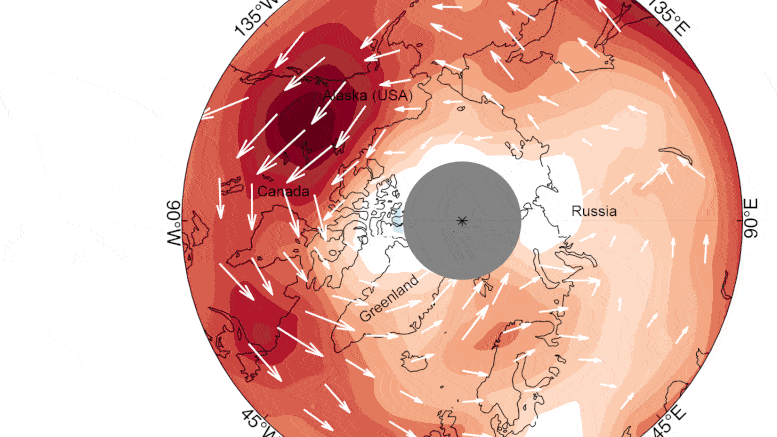Aeolus Mission Shines a Light on Complex Phenomenon of the Polar Vortex
4 Years, 2 Months, 2 Weeks, 1 Day, 13 Hours, 54 Minutes ago

As this winter’s polar vortex currently sends extreme icy blasts of Arctic weather to some parts of the northern hemisphere such as the northeast of the US, scientists are using wind information from ESA’s Aeolus satellite to shed more light on this complex phenomenon.
The polar vortex is a huge mass of frigid air high above the North Pole in the polar stratosphere. It is surrounded by a strong jet of air swirling counter-clockwise along the vortex’s boundary. The vortex tends to be much stronger in the winter, keeping bitter cold air locked in around the Arctic.
However, sometimes the vortex can weaken, become distorted or even split into two and meander further south, affecting the weather and jetstream further down in the troposphere, potentially bringing unusually cold weather and snow to lower latitudes.
One meteorological event that can disturb the polar vortex is known as a ‘sudden stratospheric warming’, which is what has been happening over the last month. Sudden stratospheric warmings happen to some extent every other year or so, but the current event has been categorized as major, and is less common.
Such dramatic events cause the strong wind around the edge of the polar vortex to weaken or reverse, leading the temperature of the polar stratosphere to rise rapidly by up to 50°C degrees Celsius over several days.
Since these events can trigger extreme weather in Europe and North America, they are of scientific and practical interest. However, the processes involved are not fully understood, and until recently there have been major technical challenges in measuring wind from space, which is needed to measure and monitor such a large-scale event.
Fortunately, scientists now have ESA’s Aeolus satellite at hand to help understand more about why and how the polar vortex is pushed off balance.
Aeolus is the first satellite in orbit to profile directly Earth’s winds from space.
It works by emitting short, powerful pulses of ultraviolet light from a laser and measures the Doppler shift from the very small amount of light that is scattered back to the instrument from molecules and particles to deliver profiles of the horizontal speed of the world’s winds mostly in the east-west direction in the lowermost 26 km of the atmosphere.
Although Aeolus only measures wind in the lower part of the atmosphere, the lower part of the current stratospheric polar vortex jet leaves a signature in the satellite’s data.
Corwin Wright, Royal Society research fellow at the University of Bath in the UK, said, “Changes in the wind structure in a sudden stratospheric warming event have never been observed directly at a global scale before. So far, our understanding of these changes has been developed using point measurements, measurements along localized aircraft flight tracks, through the use of temperature observations, and, primarily, computer models and assimilative analyses.